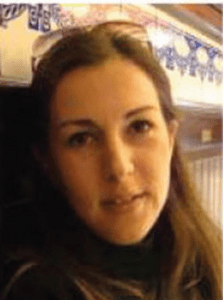2013 Young Investigator Award Nominee: Domniki Fragou

Nominee:
Nominated By:
Supporting Comments:
What drove you to choose a career in bioanalysis?
During my bachelor sandwich course in Biomedical Sciences (Liverpool, UK), I worked for a pharmaceutical company, in the drug metabolism and pharmacokinetics group. I gained experience in various bioanalytical techniques (extraction methods, mass spectrometry, spectrophotometry) and cell cultures. Furthermore, I developed a method for minimizing the solvent effects in inhibition methods of cytochrome 3A4 (poster presentation at the DMDG meeting, 2001). During that year I realized that a future career in bioanalysis best suited my skills and preferences. Indeed, I finished my bachelor degree with honors and continued with a Masters degree (Merit) in Toxicology (Birmingham, UK).
Describe the main highlights of your bioanalytical research, and its importance to the bioanalytical community both now and in the future
My research is mainly focused on the field of epigenetics, from a bioanalytical point of view. As part of my PhD, I have developed and validated an HPLC–UV method of separating and quantifying the fifth base of DNA, 5-methylcytosine and estimating its overall content in DNA (global DNA methylation). Furthermore, I have applied this method on the study of global DNA methylation in various tissues obtained from rats addicted to heroin and/or cocaine. DNA methylation is involved in the development of various disease states (such as cancer and neurodegenerative disorders), the toxicity of various agents, the process of aging, the development of stem cells and numerous other fields and is one of the most well-studied epigenetic mechanisms in mammals. The scientific interest is now focusing on novel nucleotide modifications with potential regulatory roles, such as 5-hydroxymethylcytosine. I feel that the development of innovative and reliable bioanalytical methods for the determination of these novel DNA modifications is currently of utmost importance to the scientific community.
Describe the most difficult challenge you have encountered in the laboratory and how you overcame it?
Having worked for a year in a private microbiological and chemical laboratory and after gaining a lot of valuable laboratory experience, I was appointed responsible for the development and maintenance of the quality management system employed by the company, according to ISO17025. When the time came for our laboratory to undergo the annual inspection led by the national accreditation body, I had to face the most difficult and challenging time of my career. The accreditation of the laboratory was, at that time, of utmost importance and the expectations were very high. Through hard work, a lot of studying and endless hours in the laboratory, I managed to survive! The inspection was successful with only minor comments from the supervisors, but with excellent comments on our work. The next 3 years’ all inspections were as successful as the first one and furthermore we managed to expand the field of accredited methods of the laboratory.
Where do you see your career in bioanalysis taking you?
Epigenetic phenomena and in particular DNA methylation, are reversible processes and are, therefore, promising targets for therapeutic intervention. Establishing a connection between drug abuse and addiction and DNA methylation through the application of bioanalytical methods, can bring the scientific community one step closer to ameliorating withdrawal symptoms and treating addiction, by reversing specific epigenetic alterations. I would be happy to see our bioanalytical work applied in the diagnosis of drug-specific epigenetic alterations and the monitoring of the efficiency of therapeutic interventions.
How do you envisage the field of bioanalysis evolving in the future?
Having worked for a few years both in academia and in private laboratories, it is my belief that high-end bioanalysis, according to standards, protocols and accreditation bodies will have to be implemented in every relevant laboratory. The adoption of standardized, validated protocols in routine work is the only way to ensure high-quality results that are reproducible, accurate and precise. On the other hand, if laboratories applied the same code of practice to their bioanalytical work it would make collaboration between different countries easier, enhance the transfer of knowledge and the scientific community would greatly benefit. As the economic crisis is striking one after the other the European countries, the only way out is investing in quality. In view of tis I believe that high-end scientific working groups will develop practices and standards and that scientists all over the world will work according to them.
Please list 5 of your recent publications, and select one that best highlights your career to date in the field of bioanalysis.
Kovatsi L, Fragou D, Samanidou V, Njau S, Kouidou S. Drugs of abuse: epigenetic mechanisms in toxicity and addiction. Curr. Med. Chem. 18, 1765–1774 (2011).
Fragou D, Fragou A, Kouidou S, Njau S, Kovatsi L. Epigenetic mechanisms in metal toxicity. Toxicol. Mech. Methods 21, 343–352 (2011).
Samanidou V, Kovatsi L, Fragou D, Rentifis K. Novel strategies for sample preparation in forensic toxicology. Bioanalysis 3, 2019–2046 (2011).
Kovatsi L, Fragou D, Samanidou V, Njau S, Kouidou S, Bailey A. Evaluation of 5-methyl-2′-deoxycytidine stability in hydrolyzed and nonhydrolyzed DNA by HPLC–UV. Bioanalysis 4, 367–372 (2012).
Fragou D, Zanos P, Kouidou S, Njau S, Kitchen I, Bailey A, Kovatsi L. Effect of chronic heroin and cocaine administration on global DNA methylation in brain and liver. Toxicol. Lett. (2013) Accepted for publication.
These papers summarize the findings of my doctorate research. The papers reflect our work and include all the people I have had the chance and honor to collaborate with.




